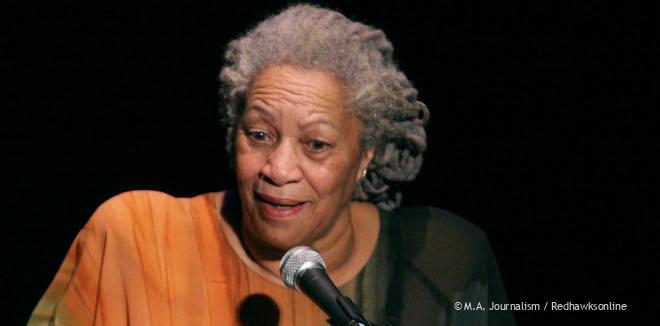The dark room of the Guthrie Theater’s Wurtele Thrust stage is covered in cracked concrete with the occasional dandelion growing out of the crevices. It looks dark and gloomy, like the calm before a storm. The audience can almost smell the scent of damp earth and wet concrete. A girl walks on the stage. The light fades with a single spotlight shining on her. The room is absolutely silent with anticipation. No one knows what is yet to happen, and maybe for the better….
Based on the book by Toni Morrison, The Bluest Eye, adapted for the stage by Lydia R. Diamond, depicts a tale of harrowing abuse, and stolen innocence. It focuses on a young 11-year-old African American girl named Pecola Breedlove (Brittany Bellizeare) who grew up during the ’40s, in a world or racism, injustice and horror. She experienced first hand the struggles of conforming to an unrealistic standard that living in that time entailed. Struggling with the unsatisfiable desire to have blue eyes, she was driven insane, hoping that one day her wish would come true.
The Guthrie’s production, directed by Lileana Blain-Cruz, engrossed the viewer in this dark world and leaves them on the edge of their seat. Its complex plot is one of contrasts. Beauty and horror, innocence and cruelty, love and rage are some of its main themes. It forces the audience to question society and the world we live in.
The Bluest Eye beautifully portrayed the horrors of humanity, showing its darker side in a fresh light. The topics discussed were things of pivotal importance, even by today’s standards. It was raw and pure, with excellent actors and realistic props. I was taken away with how real it felt. I felt what the characters felt, the horror disgust, fear, pain. It displayed the topic without sparing the viewer any horror. Its violence, though from across the room, was seen and felt.
Although this play was done in a fairly mild way, I would not recommend it for the faint of heart. It portrayed this topic in a way that was hard to watch. I found some of the scenes nauseating and horrifying. However, the topics it brought up were important to hear. It was moving and powerful.
One of the most interesting parts of this play was the beginning and the end of the play. Throughout the play, the characters were depicted almost as eerie dolls or broken records. Pecola’s words “Look, look. Here comes a friend. The friend will play with Jane. They will play a good game. Play, Jane, play,” were used as a motif that showed her innocence in contrast to the evils that surrounded her. This was an interesting depiction of what abuse and injustice can do to the people living in that society.
Another strong effect was the way lighting designer Yi Zhao put the spotlight on Pecola, furthering the point that she was alone in her troubled world. Throughout the film, the use of the spotlight really helped to develop her character, when the light was on her, it was usually a time when she made a realization about the world around her.
The Bluest Eye runs through May 21 at the Guthrie Theater. Although it may be hard to watch, if you’re up for the challenge, it is worth seeing. This play really opened my eyes to some of these important issues and helped me to see the world around me in a new light.

